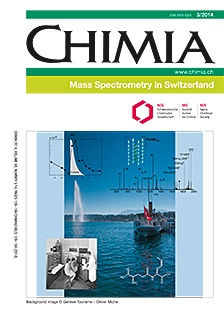Mass Spectrometry in Earth Sciences: The Precise and Accurate Measurement of Time
DOI:
https://doi.org/10.2533/chimia.2014.124Keywords:
Age determination, Mass extinctions, Supervolcanoes, Thermal ionization mass spectrometry, U-pb, ZirconAbstract
Precise determinations of the isotopic compositions of a variety of elements is a widely applied tool in Earth sciences. Isotope ratios are used to quantify rates of geological processes that occurred during the previous 4.5 billion years, and also at the present time. An outstanding application is geochronology, which utilizes the production of radiogenic daughter isotopes by the radioactive decay of parent isotopes. Geochronological tools, involving isotopic analysis of selected elements from smallest volumes of minerals by thermal ionization mass spectrometry, provide precise and accurate measurements of time throughout the geological history of our planet over nine orders of magnitude, from the accretion of the proto-planetary disk, to the timing of the last glaciation. This article summarizes the recent efforts of the Isotope Geochemistry, Geochronology and Thermochronology research group at the University of Geneva to advance the U-Pb geochronological tool to achieve unprecedented precision and accuracy, and presents two examples of its application to two significant open questions in Earth sciences: what are the triggers and timescales of volcanic supereruptions, and what were the causes of mass extinctions in the geological past, driven by global climatic and environmental deterioration?Downloads
Published
2014-03-26
Issue
Section
Scientific Articles
License
Copyright (c) 2014 Swiss Chemical Society

This work is licensed under a Creative Commons Attribution-NonCommercial 4.0 International License.
How to Cite
[1]
U. Schaltegger, J.-F. Wotzlaw, M. Ovtcharova, M. Chiaradia, R. Spikings, Chimia 2014, 68, 124, DOI: 10.2533/chimia.2014.124.







